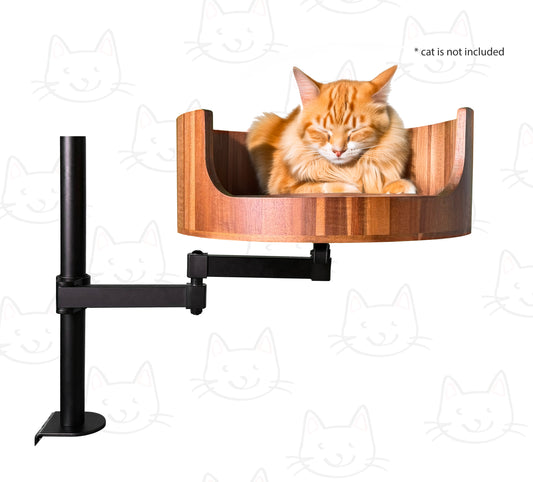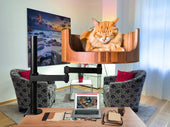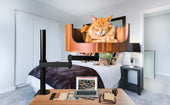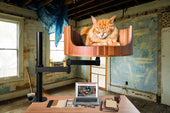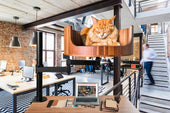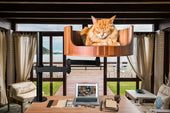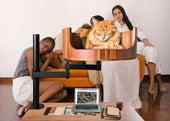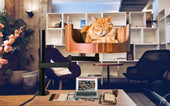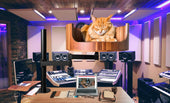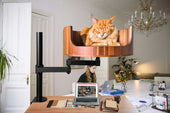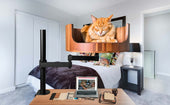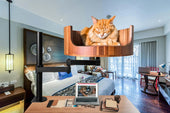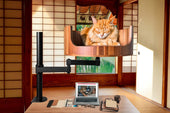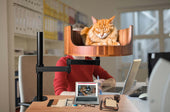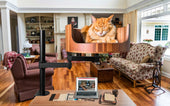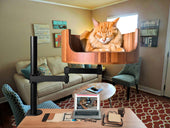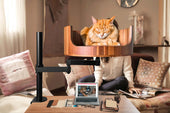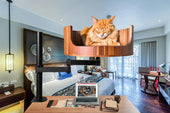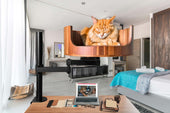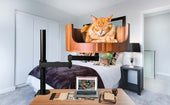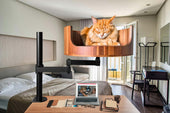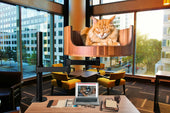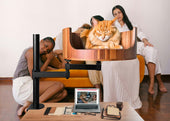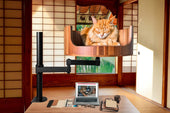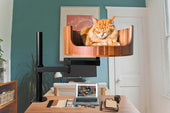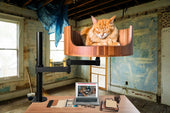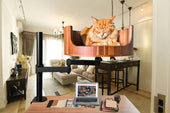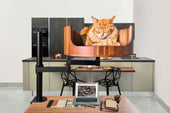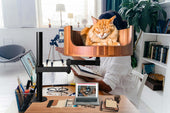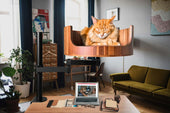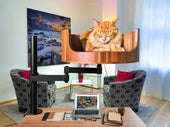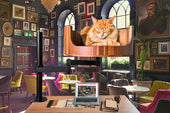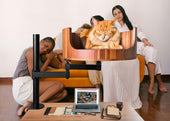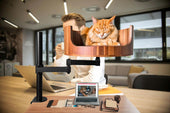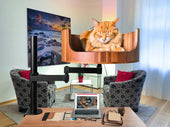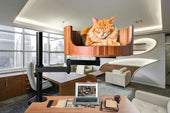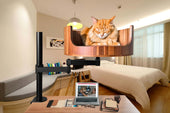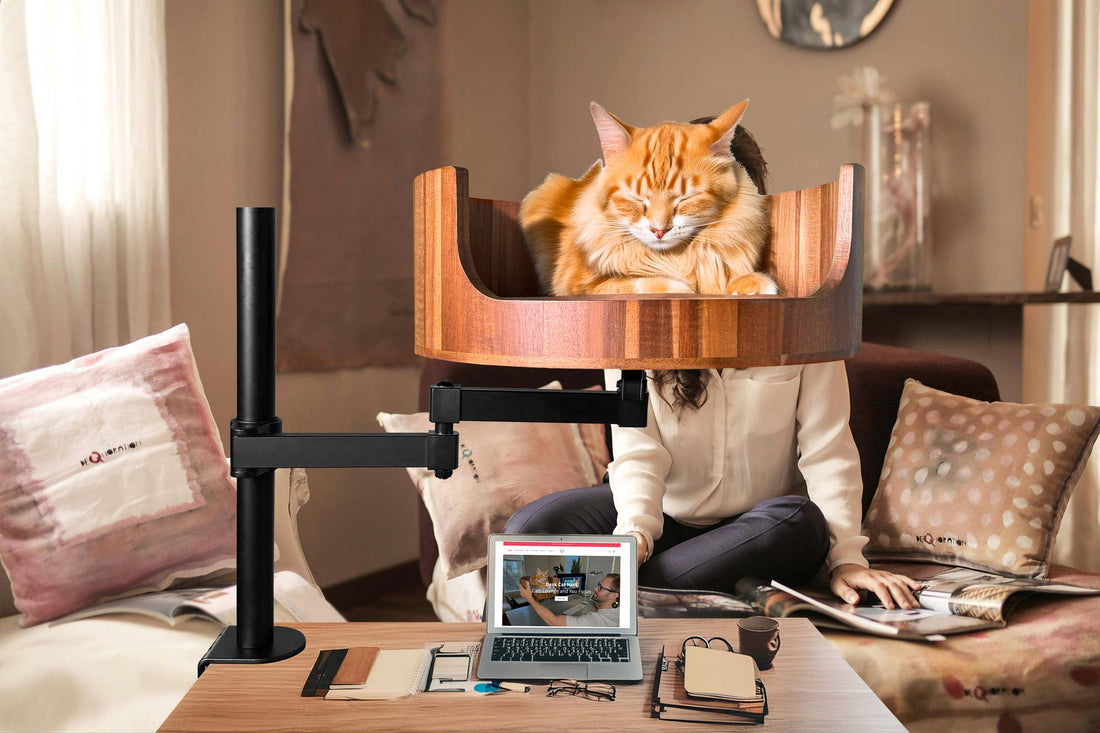
Why is my cat twitchy? Understanding feline behavior.
Share
Do you ever wonder why your cat seems to twitch or behave erratically at times? Understanding your feline friend's behavior can be a key to deciphering their mysterious ways. From sudden bursts of energy to random movements, cats can exhibit a range of behaviors that may leave us scratching our heads. In this article, we will explore the reasons behind why your cat may act twitchy and provide insights into understanding feline behavior.
One common reason for a cat to appear twitchy is due to their natural instincts as hunters. Even though domestic cats may not need to hunt for food, their predatory instincts still play a significant role in their behavior. Twitching movements and sudden bursts of energy can be a sign of your cat simulating hunting behavior, such as stalking and pouncing. Additionally, factors like stress, boredom, or pent-up energy can also contribute to a cat's twitchy behavior. By understanding these underlying reasons and potential triggers, you can better address your cat's needs and foster a harmonious relationship with your feline companion.
1. Twitching in cats may be a natural response to excitement or stimulation, but it can also indicate health issues such as fleas, allergies, or neurological problems.
2. Understanding your cat's body language and behavior cues can help you interpret their twitching and address any underlying concerns.
3. Regular veterinary check-ups and proper flea prevention can help reduce twitching episodes in cats.
4. Providing a stimulating environment with toys and opportunities for play can help alleviate twitchiness in cats.
5. Observing your cat's twitching patterns and seeking professional advice if needed can ensure your cat's well-being and overall happiness.
Signs of Anxiety in Cats
Anxiety in cats can manifest in various ways, including twitching or restlessness. Other signs of anxiety in cats may include excessive grooming, hiding, changes in appetite, and aggression towards humans or other animals. Understanding these signs can help cat owners identify when their feline friend is feeling anxious and take the necessary steps to help them feel more comfortable.
Common Triggers for Anxiety in Cats
There are several common triggers for anxiety in cats, including changes in their environment, loud noises, new pets in the household, unfamiliar visitors, or even changes in their routine. Cats can be sensitive to their surroundings, and any disruption can cause them to feel anxious or stressed out. Identifying the triggers for your cat's anxiety can help you address the root cause of their twitchiness and help them feel more at ease.
Managing Anxiety in Cats
There are several ways to help manage anxiety in cats and reduce their twitchiness. Providing a safe and quiet space for your cat to retreat to when they are feeling anxious can help them feel more secure. Using pheromone diffusers or sprays can also help calm anxious cats. In some cases, medication prescribed by a veterinarian may be necessary to help manage severe anxiety in cats. It's important to work with your vet to come up with a treatment plan that best suits your cat's needs.
Desk Cat Nest FAQ
Why is my cat twitchy?
There are several reasons why your cat might be exhibiting twitchy behavior. It could be due to stress, anxiety, boredom, or even medical issues. Providing a comfortable and safe space for your cat, such as a Desk Cat Nest, can help alleviate some of these issues.
How can a Desk Cat Nest help with my cat's twitchiness?
A Desk Cat Nest provides a cozy and secure space for your cat to retreat to when feeling stressed or anxious. Having a designated space for your cat to relax and unwind can help reduce twitchy behavior and promote overall well-being.
Is a Desk Cat Nest suitable for all cat breeds?
Yes, a Desk Cat Nest is suitable for all cat breeds. Cats of all sizes and ages can benefit from having their own personal space to curl up in. Whether your cat is small and shy or large and playful, a Desk Cat Nest can provide the comfort and security they need.
How should I introduce my cat to a Desk Cat Nest?
It's important to introduce your cat to their new Desk Cat Nest gradually. Place it in a quiet and familiar area of your home, and encourage your cat to explore it at their own pace. You can also entice them with treats or toys to help make the space more appealing.
Can a Desk Cat Nest help with other behavioral issues?
While a Desk Cat Nest is primarily designed to provide a comfortable resting spot for your cat, it can also help with other behavioral issues such as aggression or territoriality. By giving your cat their own space, you can help reduce tension and promote harmony within your household.
In conclusion, providing your twitchy cat with a Desk Cat Bed can greatly help alleviate their symptoms and provide comfort and security. The elevated design of the bed allows your cat to survey their surroundings, reducing anxiety and promoting relaxation. Additionally, the cozy cushioned surface of the bed offers a soft and supportive place for your cat to rest and unwind. Overall, investing in a Desk Cat Bed is a valuable choice for addressing why your cat may be twitchy and providing them with a safe and comfortable space to help alleviate their symptoms.

